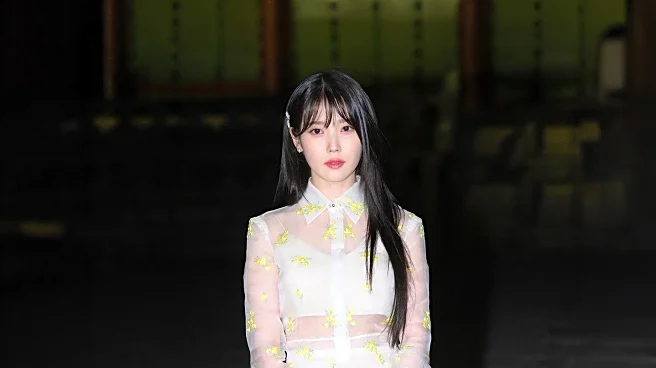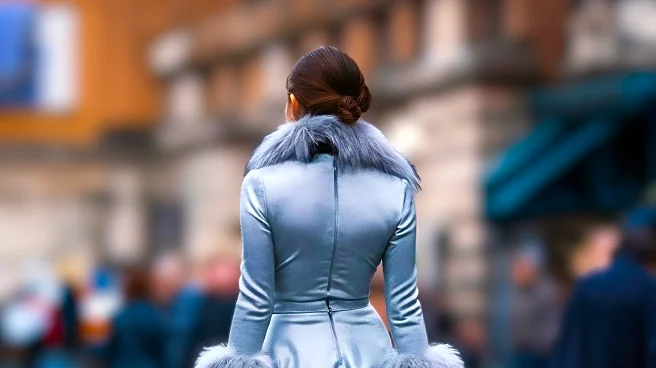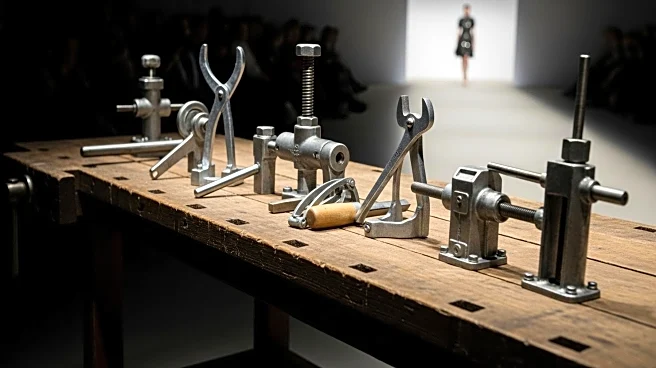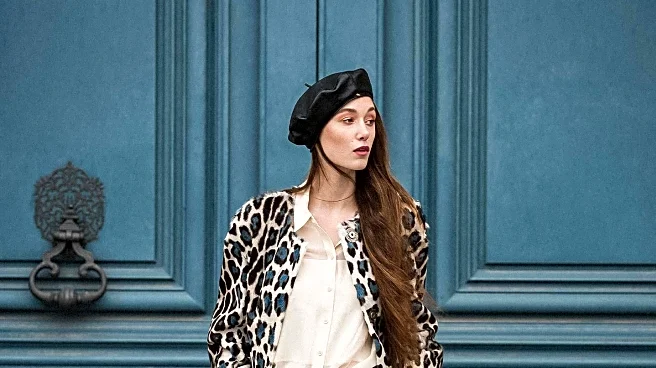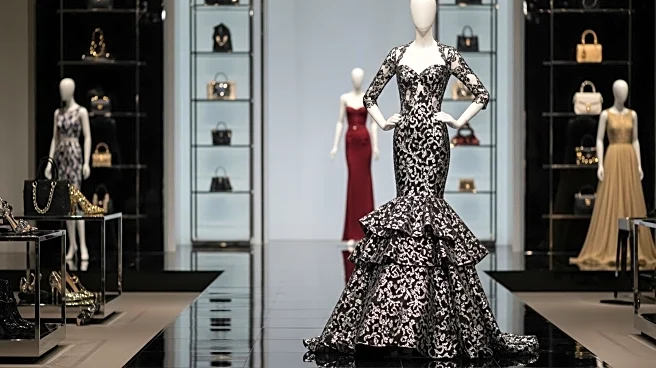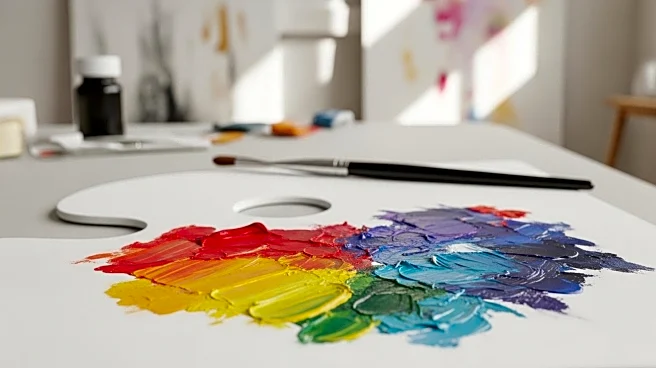What's Happening?
Miuccia Prada's latest Miu Miu spring/summer 2026 collection has made waves in the fashion industry by reinterpreting historical workwear, such as aprons and pinafores, as a statement on women's independence and agency. The collection was showcased in a setting reminiscent of a factory canteen, with the audience seated on melamine-topped tables and the space covered in red rubberized flooring. Prada's designs featured protective leather aprons, cotton drill pinafores, and canvas tool belts, symbolizing the attire of female workers throughout history. The collection also paid homage to the unacknowledged workers who support various industries, including cleaners and domestic staff, by incorporating floral wrap-over housecoats and smocks. Prada's approach highlights the generational memory of homemakers and the often overlooked contributions of women in both domestic and industrial settings.
Why It's Important?
This collection is significant as it challenges traditional notions of glamour in fashion by focusing on the realities faced by women throughout history. By elevating workwear to high fashion, Prada draws attention to the socio-economic disparities between different classes and the often invisible labor of women. The collection serves as a commentary on the fashion industry's reliance on manual skills and the unrecognized contributions of workers behind the scenes. It also underscores the importance of acknowledging and valuing the roles of women in various sectors, from domestic settings to industrial environments. This shift in focus may influence other designers to explore similar themes, potentially leading to broader discussions on gender equality and labor rights within the fashion industry.
What's Next?
As the collection gains attention, it may spark conversations about the representation of women in fashion and the industry's role in addressing socio-economic disparities. Fashion critics and industry leaders might engage in discussions about the ethical implications of using workwear as a fashion statement. Additionally, the collection could inspire other designers to explore themes of labor and gender equality in their work. The reception of this collection may also influence future trends, with more designers incorporating elements of historical workwear into their designs. Prada's approach could lead to increased awareness and appreciation for the contributions of women in various sectors, potentially impacting public policy and societal attitudes towards gender and labor.
Beyond the Headlines
Prada's collection not only highlights the historical significance of workwear but also raises questions about the cultural and ethical dimensions of fashion. By transforming utilitarian garments into high fashion, Prada challenges the industry's focus on luxury and glamour, prompting a reevaluation of what constitutes fashion. This approach may lead to a broader cultural shift, where fashion becomes a platform for social commentary and advocacy. The collection also invites reflection on the intersection of fashion, feminism, and labor rights, encouraging consumers to consider the stories behind the garments they wear. As fashion continues to evolve, designers may increasingly use their platforms to address social issues and promote inclusivity and diversity.

